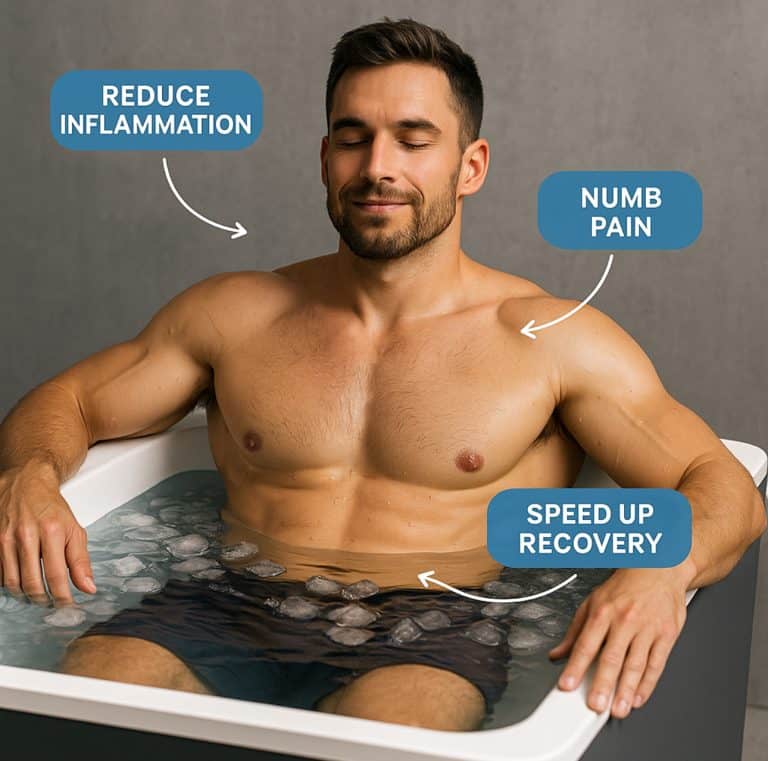Cold Plunge Before or After Workout? The Ultimate Guide for Recovery & Performance
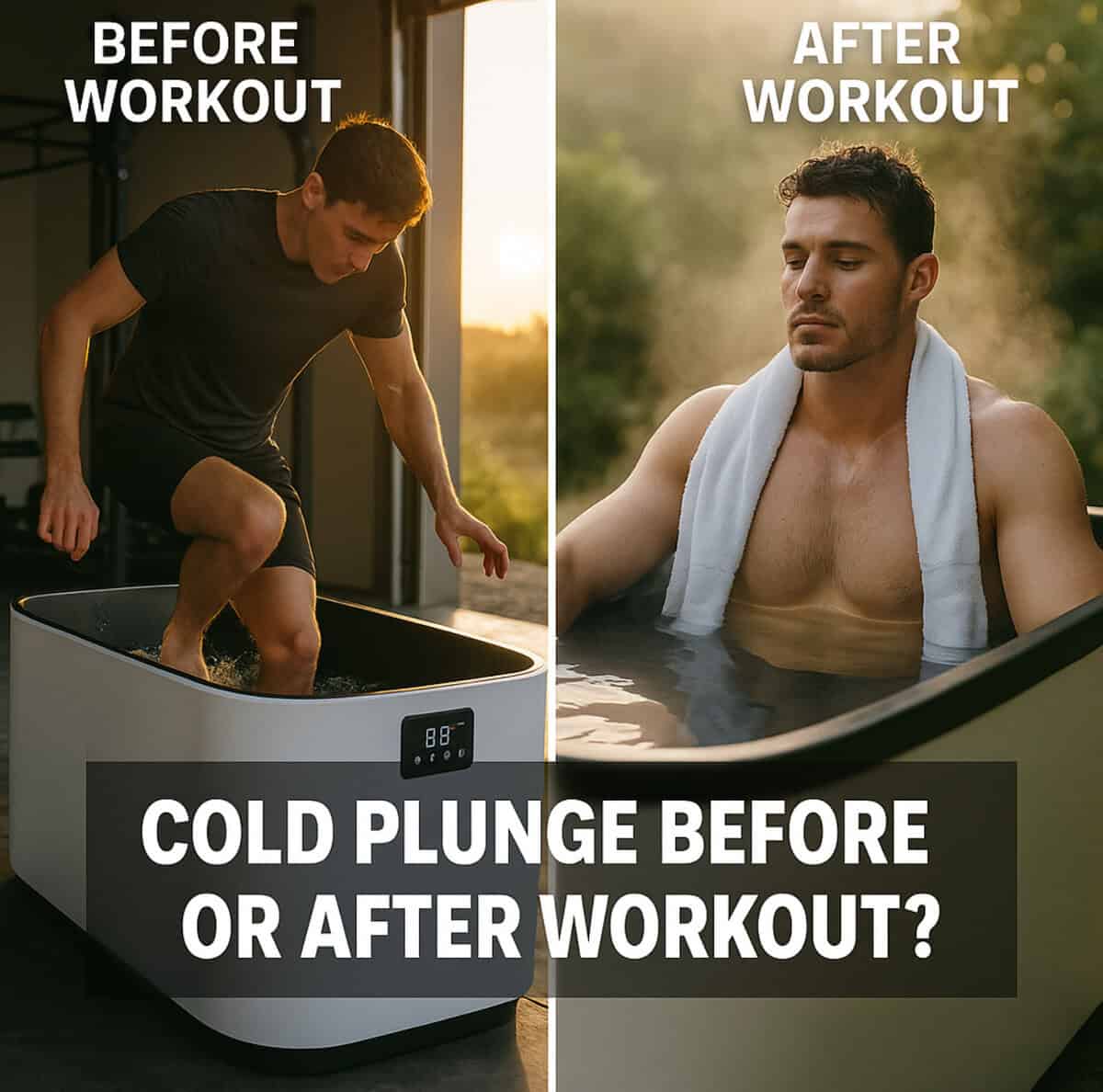
Cold plunge therapy is a powerful tool for enhancing recovery, reducing soreness, and improving mental focus. But one question comes up time and again: Should you cold plunge before or after a workout? This guide breaks it all down with science-backed insight, athlete case studies, and expert tips—so you can use cold therapy strategically and effectively.
🧠 Why Cold Plunge Timing Matters
The timing of cold plunge therapy influences more than just how you feel—it impacts cellular repair, hormonal release, and neuromuscular readiness. When you immerse your body in cold water, it signals an acute stressor to the nervous system. This activates a cascade of biological responses, including the release of norepinephrine, which sharpens focus, and dopamine, which enhances mood.
Simultaneously, cold-induced vasoconstriction slows blood flow to the extremities, which may limit swelling and muscle fiber breakdown if done at the right time. But if done too early (like before strength training), this restriction could inhibit oxygen and nutrient delivery during peak effort, negatively affecting performance.
According to Cleveland Clinic, cold therapy reduces inflammation and helps control soreness by altering blood flow and nerve response.
🕒 Cold Plunge Before a Workout: Pros and Cons
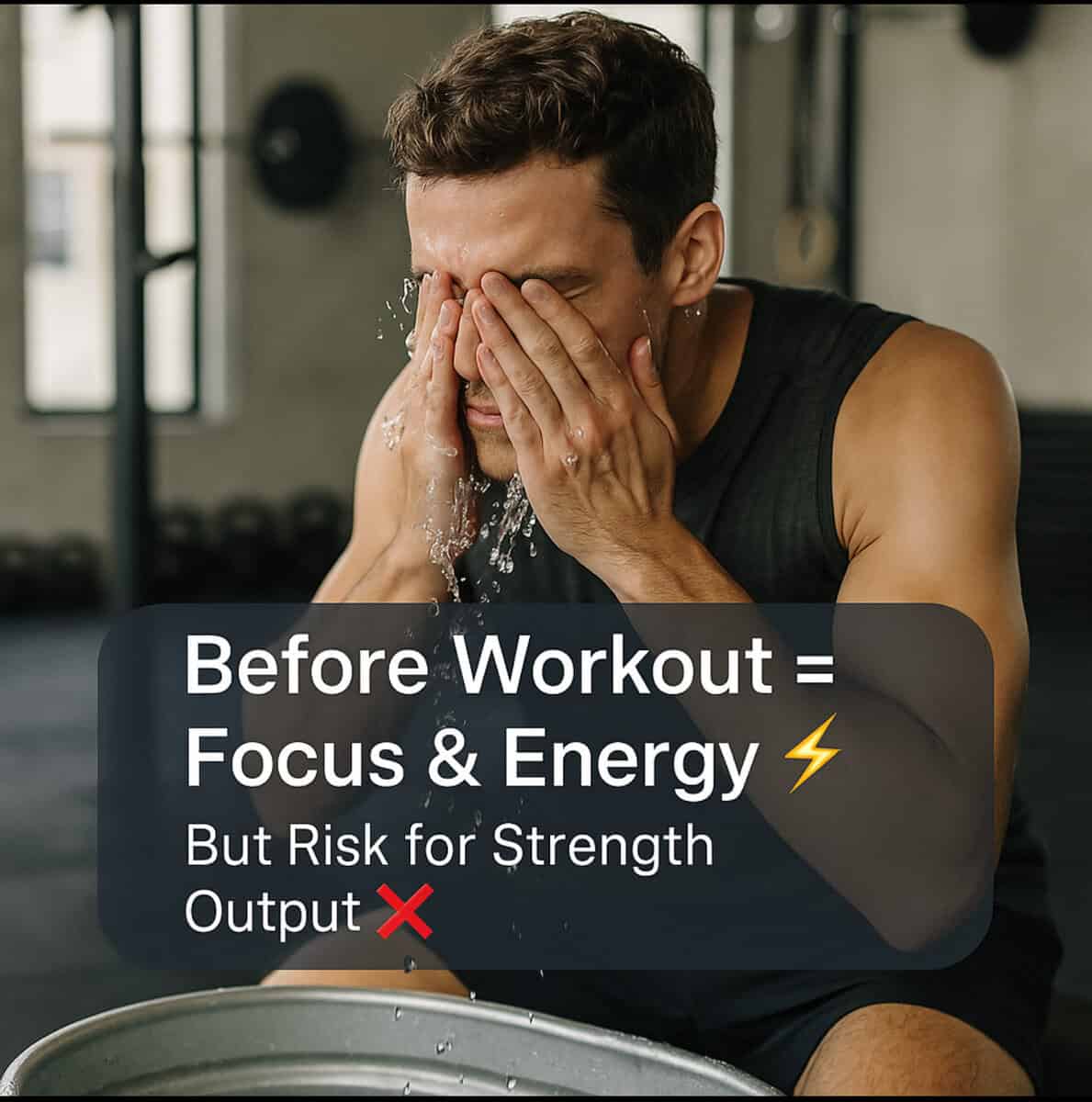
✅ Potential Benefits
- Boosted alertness and mood: Cold exposure spikes norepinephrine, which sharpens mental clarity and elevates energy.
- Reduced soreness from previous training: If you’re already sore, plunging beforehand may ease discomfort enough to train again.
- Mental resilience: Facing discomfort first thing builds mental grit, often cited as a benefit by high-performers and coaches.
- Thermal adaptation: In hot weather, plunging before endurance training may help regulate core temperature and delay overheating.
❌ Potential Drawbacks
- Blunted strength output: Cold exposure reduces nerve conduction and muscle elasticity—bad news before lifting or sprinting.
- Lowered core body temperature: This can counteract a proper warm-up and increase injury risk.
A PubMed study found that cold therapy before exercise significantly reduced explosive strength and vertical jump height.
Verdict: Only cold plunge before workouts if your goal is mental focus or recovery—not peak performance.
🔄 Cold Plunge After a Workout: Recovery Gold Standard
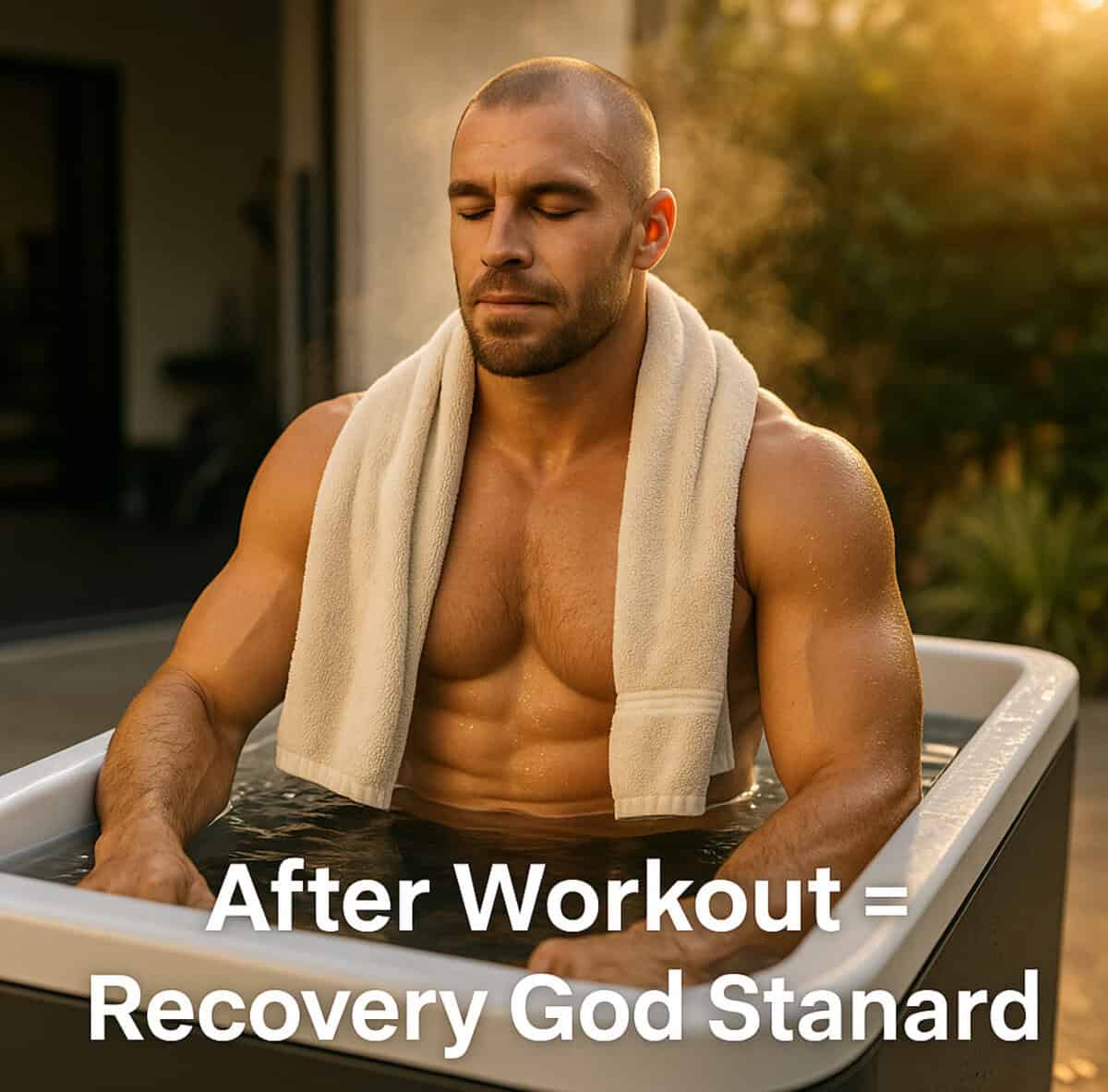
✅ Proven Benefits
- Reduces inflammation and muscle damage: The cold helps constrict blood vessels, limiting swelling and flushing out waste products like lactic acid.
- Shortens recovery time: Many athletes report better back-to-back session performance with post-workout plunges.
- Numbs soreness and pain: Cold immersion dulls pain receptors, giving temporary relief from DOMS and impact strain.
- Stimulates parasympathetic rebound: Cold exposure engages the vagus nerve, promoting relaxation, deeper sleep, and recovery.
❌ Tradeoffs to Consider
- Can reduce hypertrophy signaling: Cold plunging too soon after resistance training may blunt muscle-building inflammation.
- Harvard Health reminds us that not all inflammation is bad—some is essential to strength and tissue growth.
Verdict: Great for cardio, HIIT, and general fitness. For heavy lifting, wait several hours or plunge later in the day.
🔁 How Cold Plunge Timing Affects Different Training Types
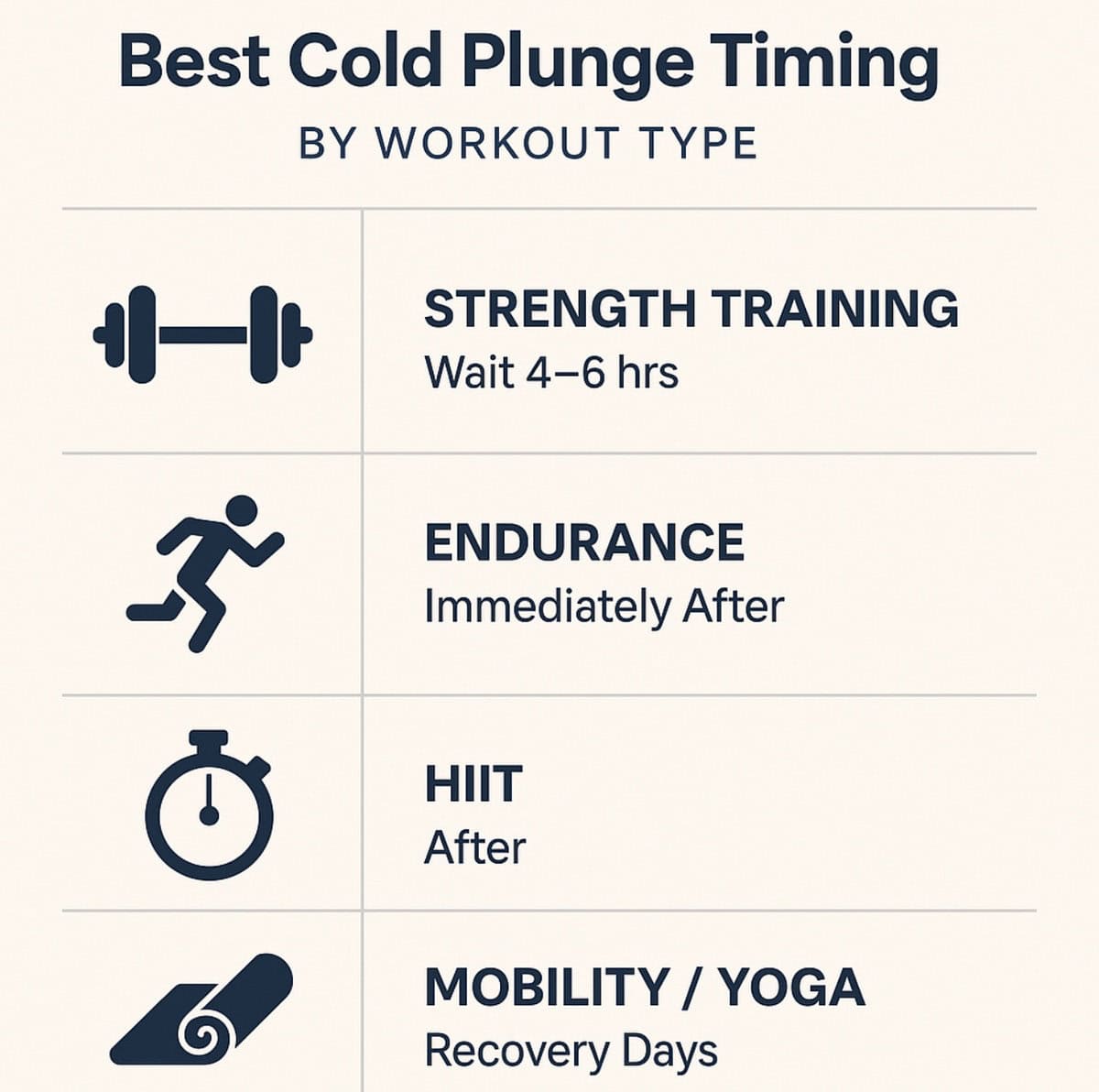
Strength Training:
Cold plunging immediately after lifting may interfere with muscle adaptation by reducing inflammation. Wait at least 4–6 hours post-lift or schedule plunges for off-days.
Endurance Training:
Great directly after long-distance runs or rides. It helps regulate temperature, ease inflammation, and flush metabolic waste.
HIIT Workouts:
Plunging after HIIT is ideal for reducing DOMS, clearing lactate, and restoring the nervous system for next-day effort.
Mobility Work or Yoga:
Cold plunges on rest or light recovery days are perfect for soothing residual aches and calming the nervous system.
🧪 What the Research Says
A 2023 study in PubMed found that immediate cold plunging post-lift reduced hypertrophy signaling by up to 25%. However, when cold therapy was delayed by several hours, athletes still experienced soreness reduction without the muscle-building trade-off.
🧬 When to Cold Plunge — Based on Your Goal
| Your Goal | Plunge Timing | Why It Works |
| Muscle Growth & Strength | Avoid right after lifting | Cold may reduce anabolic inflammation |
| Endurance & Conditioning | After workout | Flushes fatigue and reduces soreness |
| Recovery & Inflammation Relief | After workout | Enhances bounce-back between sessions |
| Focus & Mental Clarity | Before workout (brief) | Boosts norepinephrine and alertness |
🏋️♂️ Real Athlete Insights: What the Pros Do
- CrossFit athletes plunge after workouts to reduce soreness and reset for the next day.
- Triathletes and marathoners plunge both before and after long runs—for joint relief and endurance recovery.
- Strength athletes avoid plunging after lifting to protect muscle gain potential.
- Martial artists use cold therapy to reduce bruising and joint inflammation post-sparring.
- Fitness influencers cold plunge first thing in the morning to build grit, discipline, and energy.
- Team sport athletes (soccer, basketball, football) plunge after games to reduce swelling and prepare for the next practice.
- Busy professionals use cold plunges post-workout to compress recovery time into shorter windows.
The takeaway? Cold plunging works best when aligned with your training style, goal, and schedule—not someone else’s Instagram routine.
💡 Expert Tips for Safe & Effective Timing

- Before workouts: Plunge for no more than 1–2 minutes. Submerge only lower body and allow 20–30 minutes before exercising.
- After workouts: Wait 10–15 minutes to allow natural inflammation to begin. For hypertrophy, wait several hours before plunging.
- Track your response: Log mood, soreness, and sleep 24–48 hours after plunging to refine timing.
- Try contrast therapy: Combining sauna or hot water with cold plunge (contrast therapy) boosts circulation and muscle relief.
❓ FAQ: Cold Plunge Before or After Workout
How long should I wait to cold plunge after lifting weights?
Wait 10–15 minutes, minimum. This allows your body to trigger anabolic repair signals before you cool them down.
Can I cold plunge twice a day?
Yes. Many people plunge before workouts for energy and after for recovery. Start slow and build up.
What temperature is best?
50–59°F (10–15°C) for 3–8 minutes is ideal for most fitness recovery goals.
Is it better to plunge in the morning or evening?
Morning for focus and mood. Evening for recovery and sleep benefits.
Should I stretch before or after plunging?
After. Stretching cold muscles increases risk of pulls or tears
Should I reheat quickly after plunging?
No. Let your body warm up gradually. Rapid heating can negate circulatory benefits.
Can cold plunges replace foam rolling or mobility?
Not completely. Use cold plunges alongside other recovery methods for best results.

